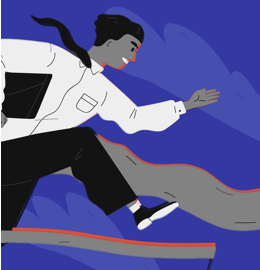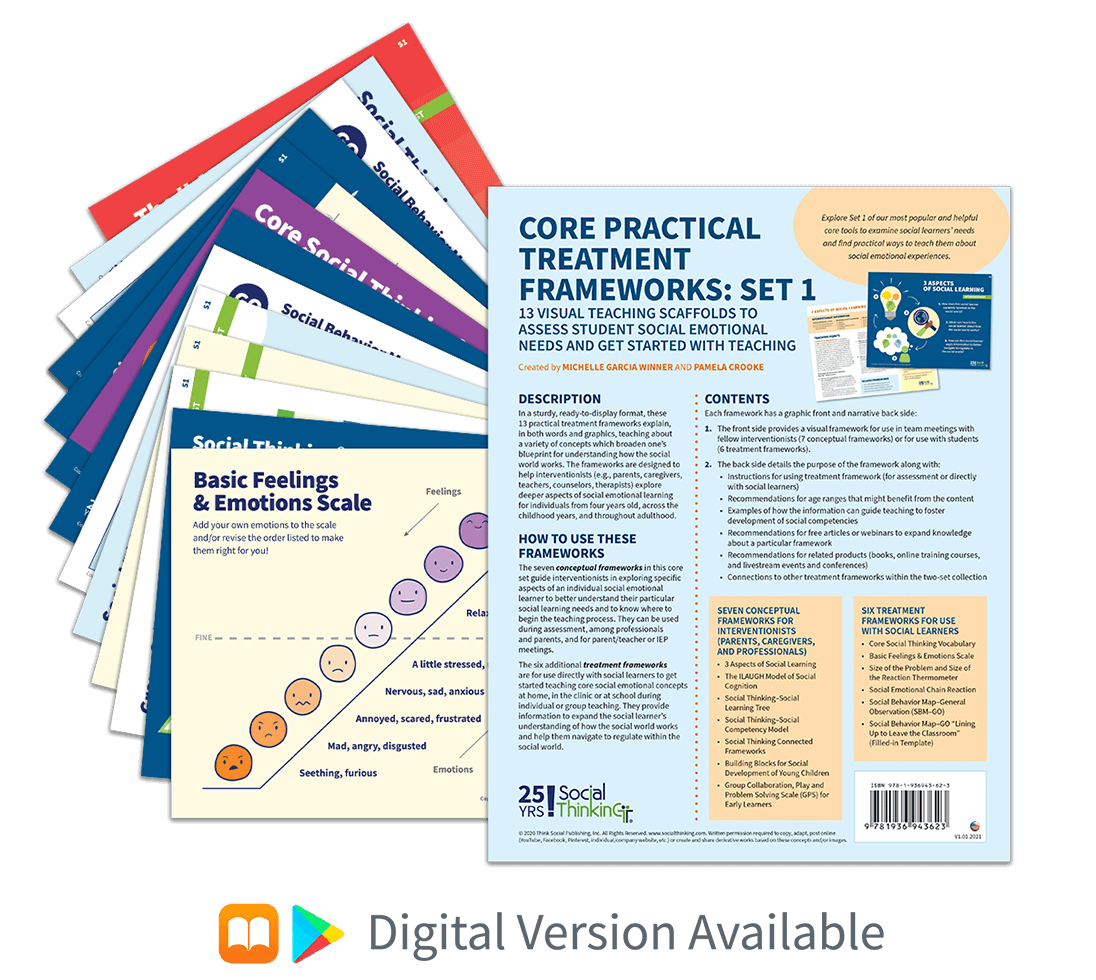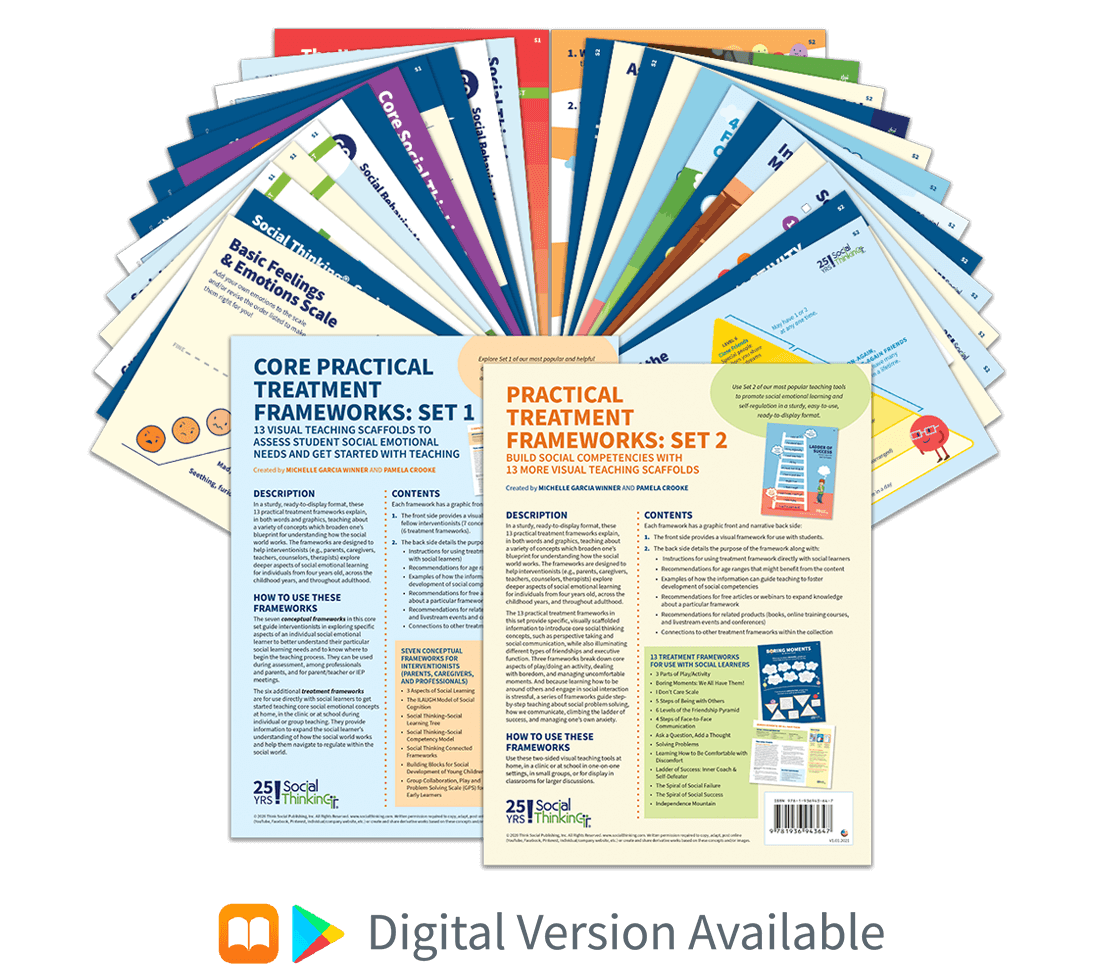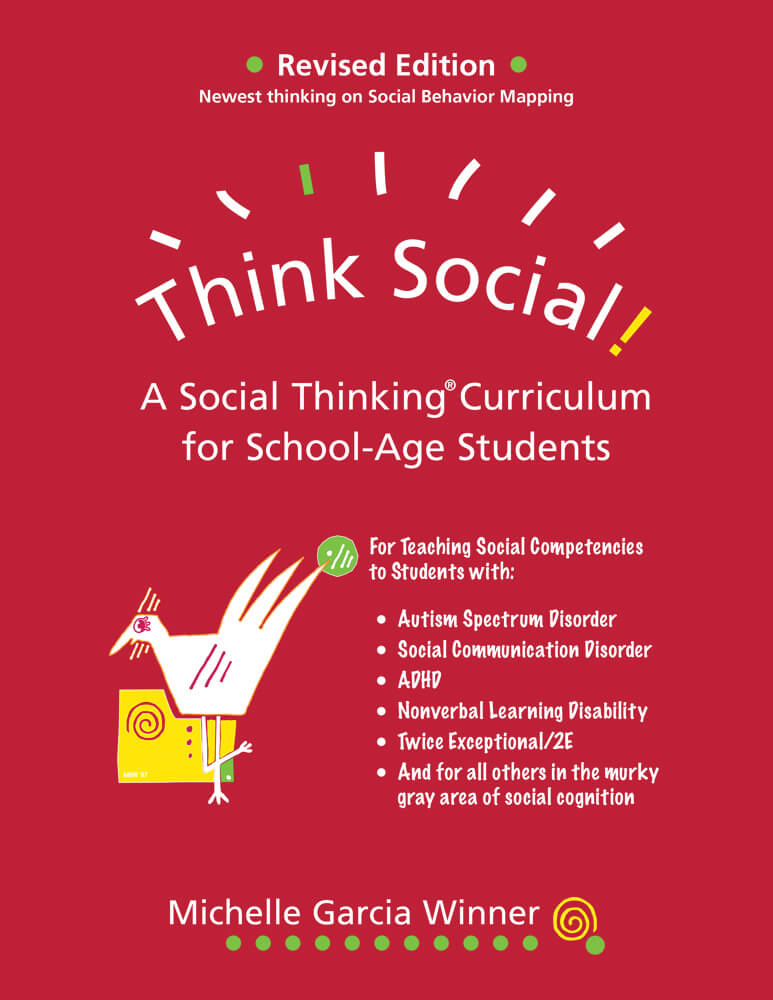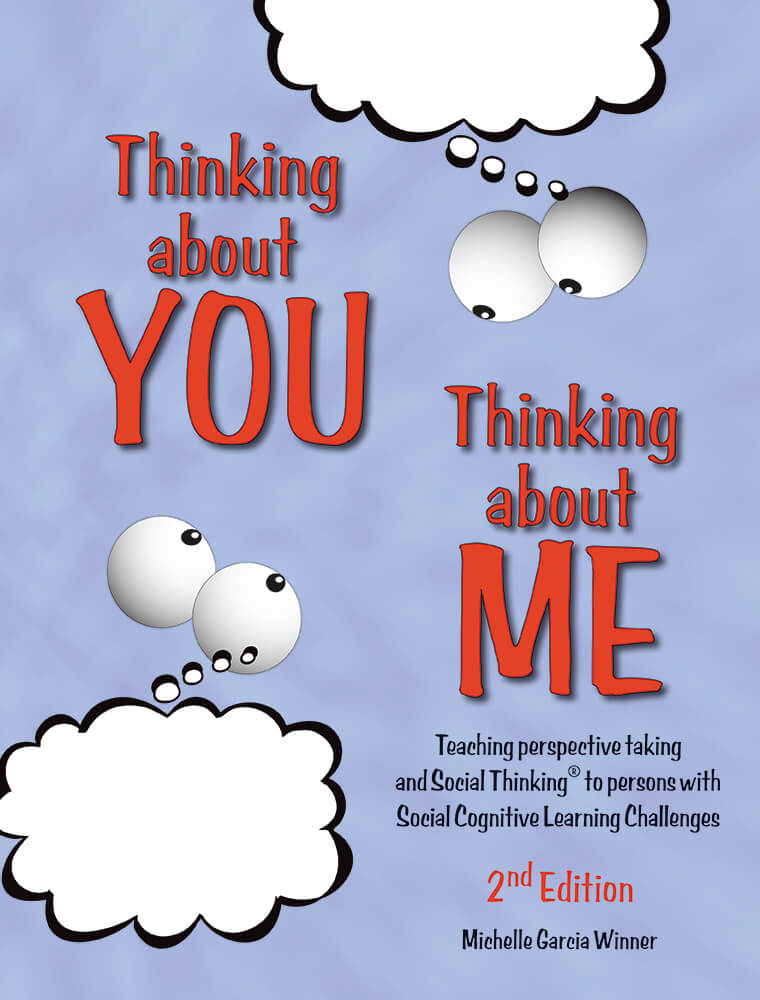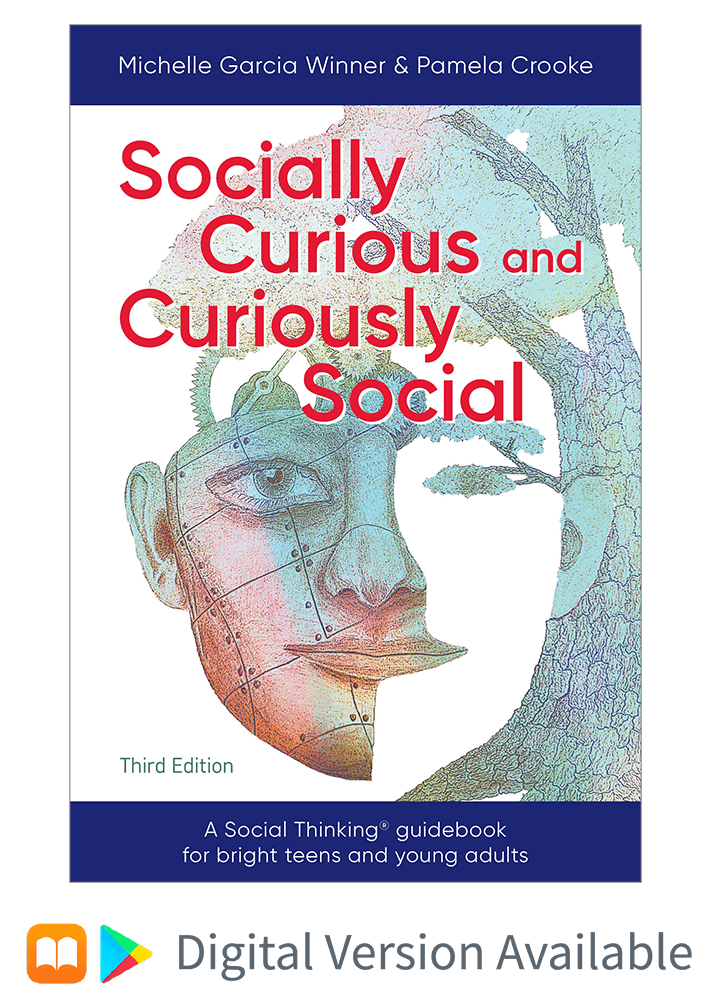Updated: July, 2022
© 2022 Think Social Publishing, Inc.
Question: I was wondering if you could help me explain some of the language you teach. I am having some trouble with the teachers I am working with wanting to use the language “expected and unexpected” in the same way they teach “appropriate and inappropriate.” I am trying to think outside the box a little and thought maybe if the explanation came from you, they would understand the terminology better.
Our Response
Historically, there has been a tendency to teach social behavior by setting behavioral expectations and then simply telling students what to do or telling them when we are disappointed by their behavior. To this end, professionals and parents, upon noticing a student doing what they might perceive as an “undesired” behavior, will tell the student, “That’s inappropriate.” Rarely do you hear teachers and parents telling students their behaviors are “appropriate.” When we interpret the meaning behind the use of the phrase “That’s inappropriate,” we usually find it implies the person is disappointed, if not upset with their behavior. Therefore, it is used to scold and redirect rather than to teach.
Within the Social Thinking® Methodology we developed Social Thinking Vocabulary terms with the purpose of proactively encouraging social learners to think more deeply about the social situation, whether they are directly part of it, or reading or watching it through some form of media or literature. Rather than assume that a person’s “inappropriate” behavior is intentional, we believe that many individuals would benefit from a deeper explanation of how the social world works so they can use strategies to make informed decisions about what to do (or not do). As clinical child psychologist Dr. Ross Greene says, “Students would if they could.” We also believe that social competencies do not result from a set of memorized social skills, but instead are a result of one’s ability to socially attend, interpret, and problem solve to figure out one’s own and others’ social responses within specific contexts.
The Social Thinking Methodology promotes the use of specific language-based vocabulary concepts to make the abstract social world more concrete. Two commonly used vocabulary concepts are expected and unexpected behaviors. These terms have generated a lot of interest from our large and growing social emotional learning community. While we find many people using these terms/concepts well, we also find others using the terms in the same way they use “appropriate/inappropriate” behavior. So, they’ve taken the teaching vocabulary and used it to scold, redirect, or reward a behavior without teaching explicitly the deeper understanding of the why of using certain social behaviors in different contexts.
How to teach and use the expected & unexpected behavior vocabulary
Here’s how best to use these concepts as they were conceived and designed. The reality is that all of us have social expectations for how we should be treated by others. This includes both neurotypical and neurodivergent individuals. So, the first goal is to become aware of what we expect from others through our own lens, and then later, how these expectations are reciprocal.
- We believe that helping a person to think through a situation—being mindful of their social goal—can help them adapt toward meeting the shared social expectations.
- Students with social learning differences and/or challenges (ADHD, pragmatic language challenges, behavioral diagnoses, autism spectrum levels 1 and 2, etc.) generally struggle to be keen observers of social information. That means we need to encourage students to be more aware of the power of social observation. We need to teach individuals to observe:
- The situation. Situations are defined as where we are, who are the people, and what is happening at that time. Situations can be specific events happening within a more general environment. If the environment is a classroom, a situation might be independent work time, a whole-class discussion, preparing to leave the classroom,” etc. There are many, many situations within any larger environment.
- Within each situation, we assume students can figure out the hidden social expectations. But to do this, we have to first observe (where + people + what’s happening), combined with our past experiences (if we have them) to infer or figure out what an expected behavior would be. For example, when in a classroom, a teacher has a different role from the students, and there is an assumption that the teacher will behave differently from students when in class. Take time to teach that we all have expectations for each other based on the situation. But if the situation were to change (a piñata at a birthday party), then both teachers and students would very likely have the same behaviors (laughing, yelling, swinging a stick). In other words, it’s not the behavior that is expected or unexpected, it’s the situation that dictates whether it is.
- Avoid talking only about unexpected behaviors. Highlight the behaviors that are expected for that situation in an explicit way.
- For example, “Wow, you figured out that raising your hand is an expected behavior for teacher talk time. That keeps me feeling relaxed while I’m teaching, but what about during recess?”
- Most kids would disagree that they need to raise their hands at recess, so continue to be explicit in your language when they decipher the hidden expectations of that situation. Make sure to include feelings to help students make the connection between actions and feelings.
- “That’s right! Raising your hand during recess would be an unexpected behavior for that situation. I would be confused if you did. Brilliant!”
- You’ll likely notice that students find it far easier to point out the unexpected behavior in a situation. Once they are identifying them, ask them to tell you about the expected behavior for that situation (opposite). For example, if they notice that “blurting” or calling out comments is unexpected for teaching time, then acknowledge their insights and ask them to state what might be an expected behavior for the situation (e.g., keep thoughts from being heard by holding them in your brain or writing them in a thought journal).
- Behaviors that are expected for the situation tend to result in others feeling calm, neutral, or possibly even pleased.
- Behaviors that are unexpected for the situation tend to result in people feeling confused, or sometimes annoyed, nervous, or angry.
- This vocabulary is part of the larger Social Thinking teaching framework called the Social Emotional Chain Reaction (SECR). In short, the SECR summarizes that in any situation, there are expected and unexpected behaviors. Reminder: A behavior might be expected in one situation and unexpected in another. It’s the situation that dictates whether the behavior is expected or unexpected.
- A detailed explanation and implementation guide for how to use Social Situation Mapping, can be found in two of our books: Thinking About YOU Thinking About ME, 2nd Edition and Social Situation Mapping.
When working with any student, it is always best to spend more time telling them when they figure out the expected behaviors for the situation rather than focus on unexpected behaviors. Any type of attention (negative or positive) tends to validate the behavior. In other words, a teacher scolding a student directs everyone’s attention to the student, which can be interpreted by the student as a positive, especially if they rarely get attention of any sort. Many students seek negative attention because no attention feels the most punishing of all!
At the end of the day, figuring out the expected behaviors based on the situation helps to create a community where people understand one another.









